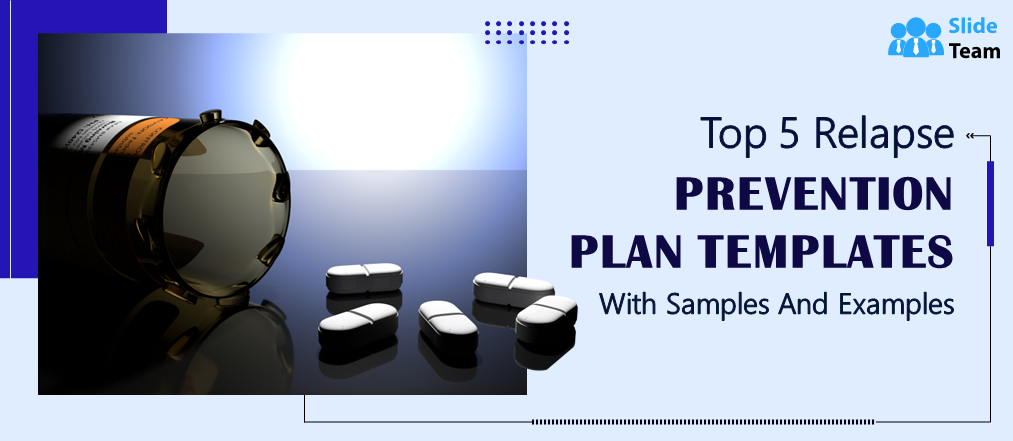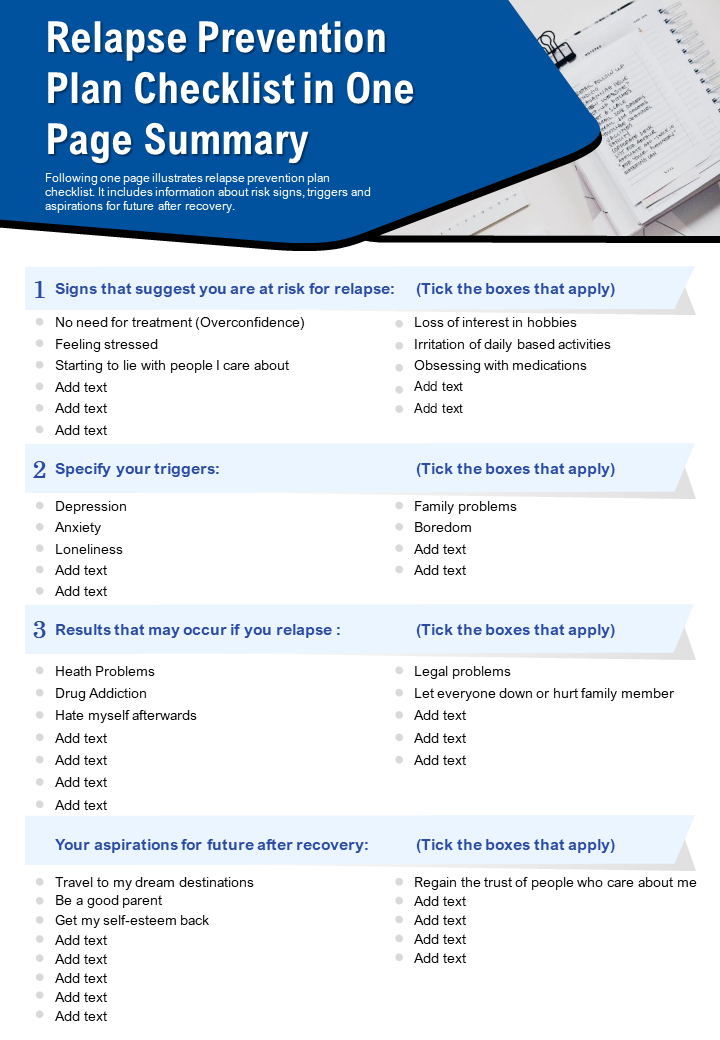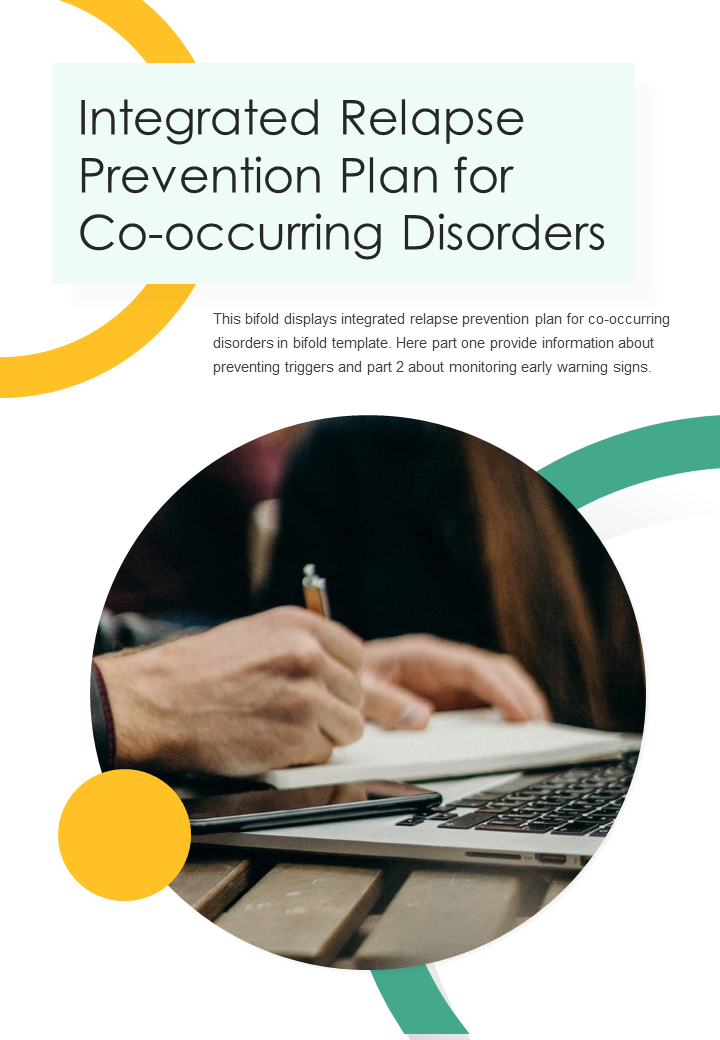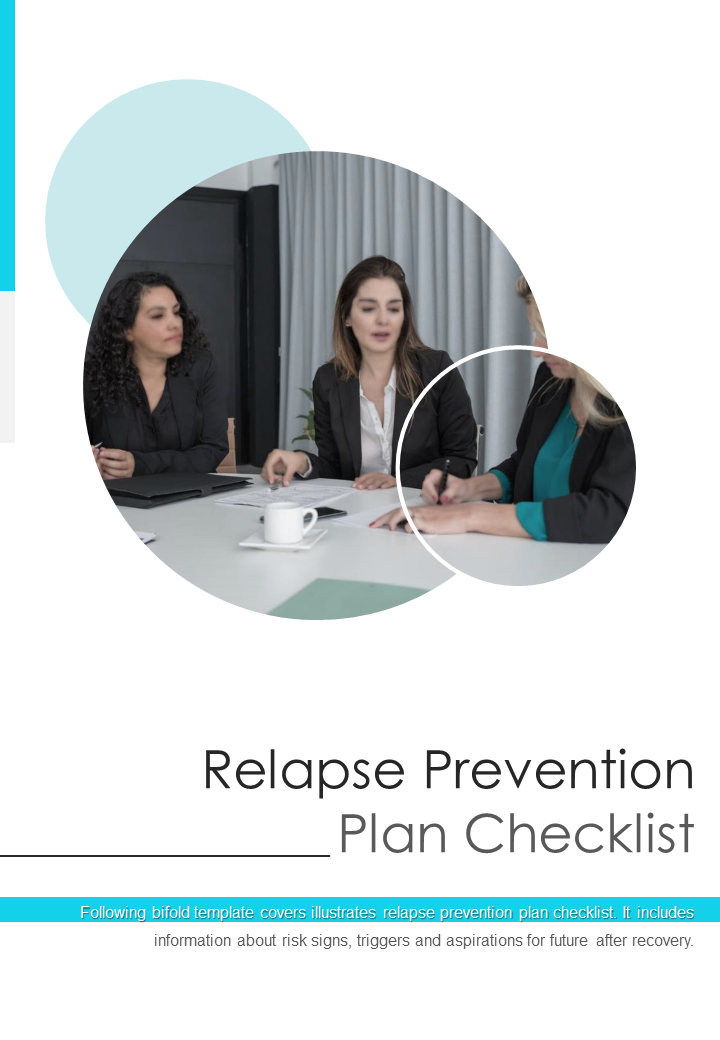Recovering from mental or physical health issues can be a challenging journey, but it's undoubtedly worth the effort. With the right tools and support, it's possible to minimize the risk of setbacks and maintain progress. One such helpful tool that can make this journey a bit smoother is a Relapse Prevention Plan Template.
A relapse prevention plan template that is both comprehensive and customizable.
A standard relapse prevention plan template delivers a personalized plan that demonstrates the strategies and actions to be taken by an individual to prevent a relapse (return to addictive thought/ behavior). It is a document that allows patients to keep track of their health progress, making it easier to stay on track and avoid setbacks.
Our relapse prevention plan templates include steps that help individuals identify early warning signs, cope with common triggers, and access support systems in case of a relapse, making the recovery process less daunting.
We at SlideTeam, are committed to helping you build a strong foundation for a lasting recovery with our carefully tailored relapse prevention plan templates. Our PowerPoint Slides can be used to track and manage several conditions or lapse behaviors, such as drug addiction, anxiety, depression, eating or co-occurring disorders, and other mental health issues.
Let’s get to the good part!
Template 1: Relapse Prevention Plan Checklist In One-Page Summary Presentation Report Infographic
This PPT Layout illustrates the relapse prevention plan checklist. It includes three sections: potential signs for relapse, common triggers, potential results, and future recovery aspirations. The list and tick action make you feel in control.
Template 2: One-Page Integrated Relapse Prevention Plan For Co-occurring Disorders Report Infographic PPT
The plan within the PPT Theme incorporates strategies that address mental health and substance use disorders. The template is classified into two parts; part one provides information about preventing triggers, and part two provides information about issues such as early warning signs, drug addictions, legal problems, and hatred for family members.
Template 3: One-Page Relapse Prevention Plan With Warning Signs Presentation Report Infographic
Don't let one slip turn into a full-blown relapse. Use this warning signs relapse prevention plan to stay on track. This PPT Template elucidates early relapse warning signs and the plans to tackle them. It is divided into three key segments: times of high risk, early warning signs followed by thoughts/ behavior, and methods to deal with setbacks.
Template 4: Bi-fold Integrated Relapse Prevention Plan For Co-occurring Disorders
This comprehensive plan incorporates strategies and tools that consider the interrelation between the co-occurring disorders, recognizing that they can often reinforce each other. The plan also helps to identify triggers, develop coping skills, attend therapy, take medication as prescribed, and engage in self-care. This integrated approach to the relapse prevention plan template can promote long-term recovery and manage co-occurring disorders effectively.
Template 5: Bi-Fold Relapse Prevention Plan Checklist Document Report
This five-page PPT Deck includes slides that include risk signs, common triggers, potential relapse results, future recovery aspirations, and a contact us page. Distribute this template to at-risk people both in and out of recovery and take the step to help them.
Recovery is a journey, not a destination.
The road to recovery can be bumpy, and it's important to understand the warning signs of relapse. It's not just about the physical act of slipping up - there are often changes in our thoughts, feelings, and behaviors long before we reach that point. But with the proper support and commitment, it's possible to maintain your sobriety and lead a fulfilling, healthy life.
Our relapse prevention plan templates are designed to be your partner in recovery, helping you create the most suitable personalized plan. With customizable elements, you can tailor your plan to suit your needs and stay on course. And remember, recovery is a journey - Don't let a relapse sneak up on you and take action towards a brighter future.
FAQs on Relapse Prevention Plan
What is a relapse?
In the context of addiction or substance use disorder, relapse refers to the return to basing using drugs or alcohol after a period of sobriety. It is a recurrence of the problematic behavior or substance use, often characterized by a return to the same level or pattern of use as before the individual attempted to quit or reduce use. A relapse can occur at any point during the recovery process, even after a long period of sobriety. It is important to note that a relapse is not a sign of failure but rather an opportunity for the individual to reassess their recovery plan and make necessary adjustments.
What is a relapse prevention plan?
Minimizing the risk of relapse involves making a plan for recovery, which can include creating a relapse prevention plan. Such a plan can be a tangible reference guide during counseling sessions. It is a blueprint for managing stress, maintaining accountability, and focusing on recovery goals. Relapse prevention plans are personalized to individual circumstances, triggers, and needs.
What are the four main ideas in relapse prevention?
The four main ideas in relapse prevention are:
- Identifying Triggers: This involves recognizing the situations, events, or emotions that can trigger cravings or lead to substance use.
- Developing Coping Strategies: Coping strategies are ways to manage triggers and cravings when they occur and abstain from substance abuse. This can include techniques such as deep breathing, mindfulness, maintaining proper hygiene, and distraction techniques.
- Building a Support Network: Sobriety requires a stable, safe, consistent environment and a support network for long-term recovery. This includes friends, family, therapists, support groups, and healthcare providers.
- Creating a Relapse Prevention Plan: It is a personalized plan that outlines strategies for avoiding relapses and managing triggers. This plan may cover specific coping strategies, healthy lifestyle habits, and communication strategies with loved ones.
What can be done to prevent a relapse?
You can follow the following steps to prevent a relapse:
Step 1: Identify personal goals and motivations for positive changes in recovery. Take time to reflect on your recovery goals and motivations. Set specific, measurable, achievable, relevant, and time-bound (SMART) goals that align with your values and aspirations.
Step 2: Make a plan to manage cravings and triggers by naming specific challenges and methods for overcoming them. Identify the people, places, things, thoughts, and situations that trigger your cravings and increase your risk of relapse. Develop strategies to manage these triggers effectively, such as avoiding them altogether, practicing relaxation techniques, seeking support from loved ones or a professional, or engaging in alternative activities that bring you joy and fulfillment.
Step 3: The next step is to find ways to improve self-care and maintain a healthy lifestyle. Prioritize your physical, mental, and emotional well-being by embracing healthy habits such as adequate sleep, nutritious meals, regular exercise, mindfulness and self-compassion, and enjoyable hobbies and activities.
Step 4: Prepare communication tools and set up a support system. Build a network of supportive individuals who can provide you with encouragement, accountability, and guidance throughout your recovery journey. This can include family members, friends, mentors, or support groups. Make a list of their contact information and develop a communication plan outlining when and how you will reach out for help when needed.
Step 5: Devise strategies to keep yourself accountable to the plan. Stay consistent and motivated toward your recovery goals by setting achievable milestones, tracking your progress, and celebrating your successes. Create a list of reasons and the potential consequences of relapse to remind yourself of the importance of remaining sober. Also, remember to review your plan regularly and adjust it based on your needs and circumstances.
What is the most important step to prevent relapse?
All the steps outlined in the above relapse prevention plan are essential for a stable recovery. However, the most important step may vary for each individual, depending on their unique circumstances and challenges in recovery.
That being said, many people in recovery would agree that identifying and managing triggers and cravings is a critical step in preventing relapse. This involves identifying specific situations, people, or things that may trigger cravings and developing strategies for coping with those triggers in a healthy way. By learning to manage triggers and cravings effectively, individuals can reduce their relapse risk and maintain their sobriety.





 Customer Reviews
Customer Reviews






















